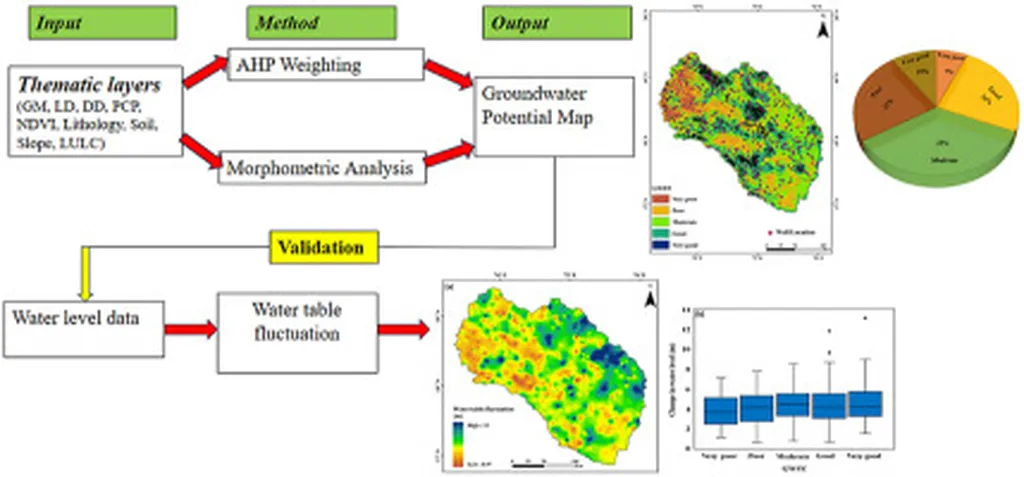In the heart of India, the Upper Bhima River basin is undergoing rapid transformation, and a recent study published in *Discover Water* is shedding light on how these changes could reshape agriculture and water management in the region. Led by Dilip Gulabrao Patil from the Department of Civil Engineering at Vidya Pratishthan’s Kamalnayan Bajaj Institute of Engineering and Technology, the research leverages cutting-edge technology to analyze three decades of land use and surface water dynamics, offering critical insights for sustainable development.
Using the power of Google Earth Engine and high-resolution satellite data, Patil and his team have mapped the dramatic shifts in land use between 1990 and 2020. The findings are striking: barren land has plummeted from 67.1% to just 7.7%, largely converted into agricultural land and built-up areas. “The expansion of agricultural land from 7.6% to 47% is a clear indication of intensified farming activities,” Patil explains. “However, this rapid conversion comes with significant implications for water resources and hydrological processes.”
The study reveals that while 94.76 km² of water bodies remained permanent, 23.0 km² of new permanent water emerged, and 0.50 km² of permanent water was lost. Seasonal water bodies also saw changes, with 37.31 km² newly classified as seasonal and 9.72 km² lost. These shifts suggest intensified surface runoff and diminished groundwater recharge potential, which could pose challenges for agriculture.
For the agriculture sector, these findings are particularly relevant. The expansion of agricultural land indicates a growing demand for water, but the loss of permanent and seasonal water bodies could strain water availability. “As water resources become increasingly stressed, farmers may need to adopt more efficient irrigation practices and water management strategies,” Patil notes. “This could include the use of drought-resistant crops, precision agriculture techniques, and better water storage and distribution systems.”
The research also highlights the importance of sustainable land use planning. “By understanding the dynamics of land use and water resources, policymakers and stakeholders can make informed decisions that balance agricultural productivity with environmental sustainability,” Patil adds.
The study’s use of advanced technologies like Google Earth Engine and the Global Surface Water dataset sets a new standard for environmental monitoring and analysis. “These tools allow us to track changes over large areas and long periods with unprecedented accuracy,” Patil says. “This capability is crucial for developing adaptive water resource management strategies in the face of ongoing urbanization and climate change.”
As the Upper Bhima River basin continues to evolve, the insights from this research will be invaluable for guiding future developments. By integrating remote sensing and GIS technologies, stakeholders can better understand the impacts of land use changes on water resources and implement strategies to mitigate potential risks. The findings published in *Discover Water* not only provide a roadmap for sustainable land use planning but also underscore the importance of innovative technologies in addressing the challenges of a changing environment.

